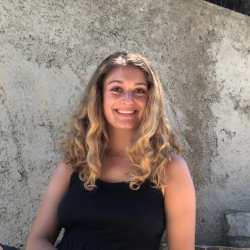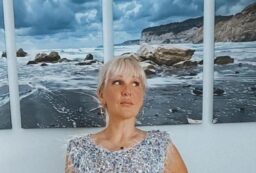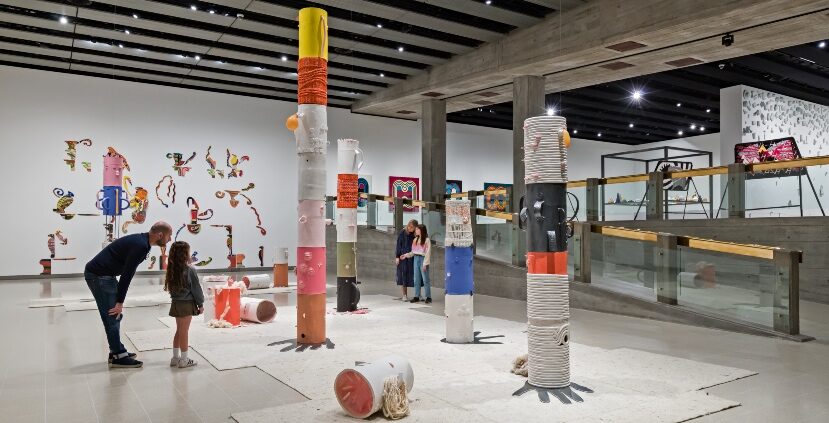
Whoever was involved in the naming of the Hayward Gallery’s ‘Strange Clay’ certainly got the ‘strange’ part right. The creations on display are definitely out of the ordinary. Yet theirs is a strangeness that inspires awe and necessitates reflection. Upon entering the showcase – ranking as one of London’s most unique art exhibitions – visitors may feel as if they’re entering a parallel universe.
Cartoon-like faces carved out of pink and yellow clay peer down at passers-by from a lofty perch. A hand protrudes from one, lips stick out of others, and recreated emojis wink out of several. Fragments of ornately painted ceramics appear on the wall as if splattered, colourful squiggles crawling like worms. All of this is only in the first room: a microscopic taster of the surreal world that is ‘Strange Clay’.
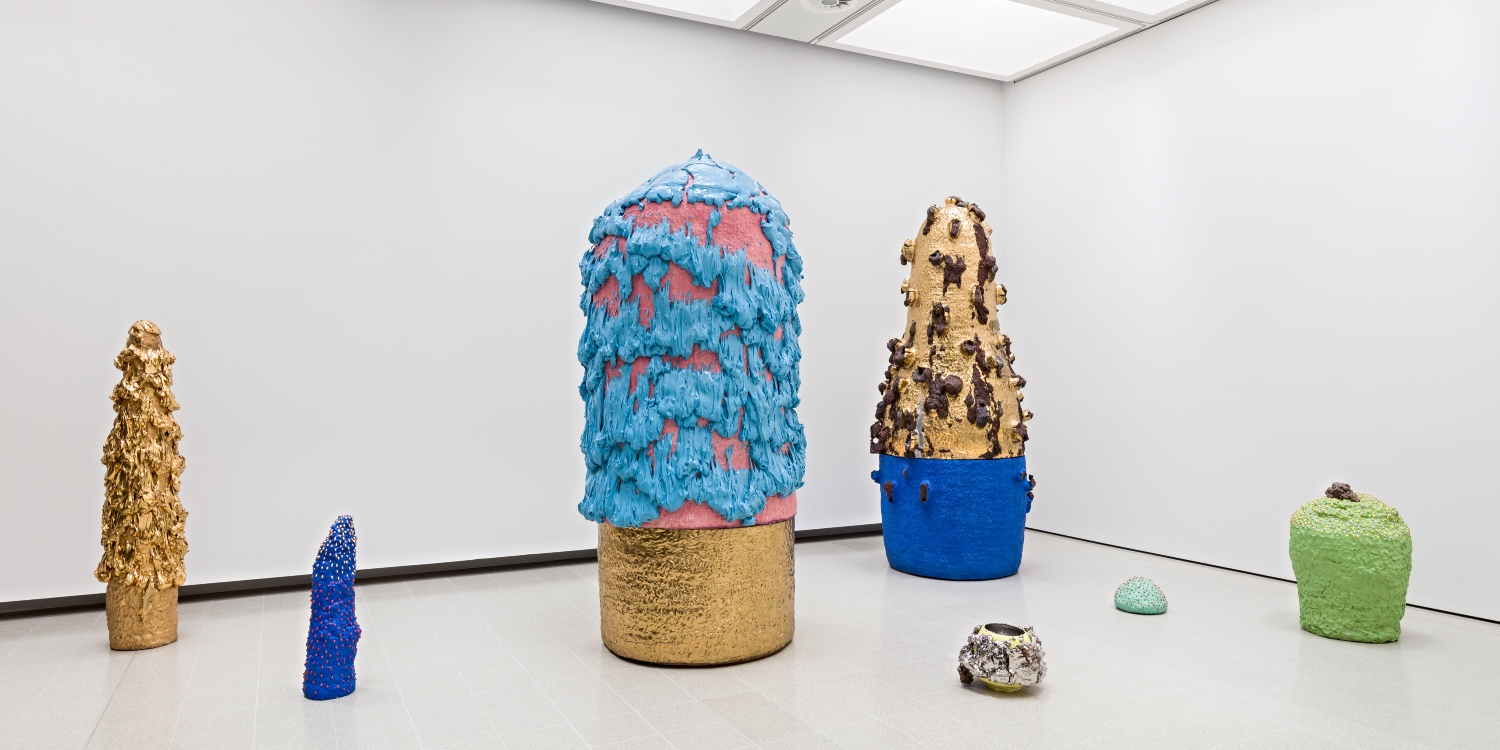
Surreal Scenes
Spread out over three levels, the landscape of ‘Strange Clay’ at times resembles a science fiction film set. Beholding the various creations, it may take a moment for the eyes to adjust. Even then, the subject matter might remain unclear. Yet this uncertainty speaks to the uniqueness of the creations produced. Each piece goes beyond the forms expected from the medium of ceramics. Here, you will find no ordinary vases, pots, or plates. The humble mug and jug transform into something otherworldly.
The exhibit features contemporary creations from 23 artists around the globe. While they work within different artistic traditions and utilise different techniques, they all create in the same medium: clay.
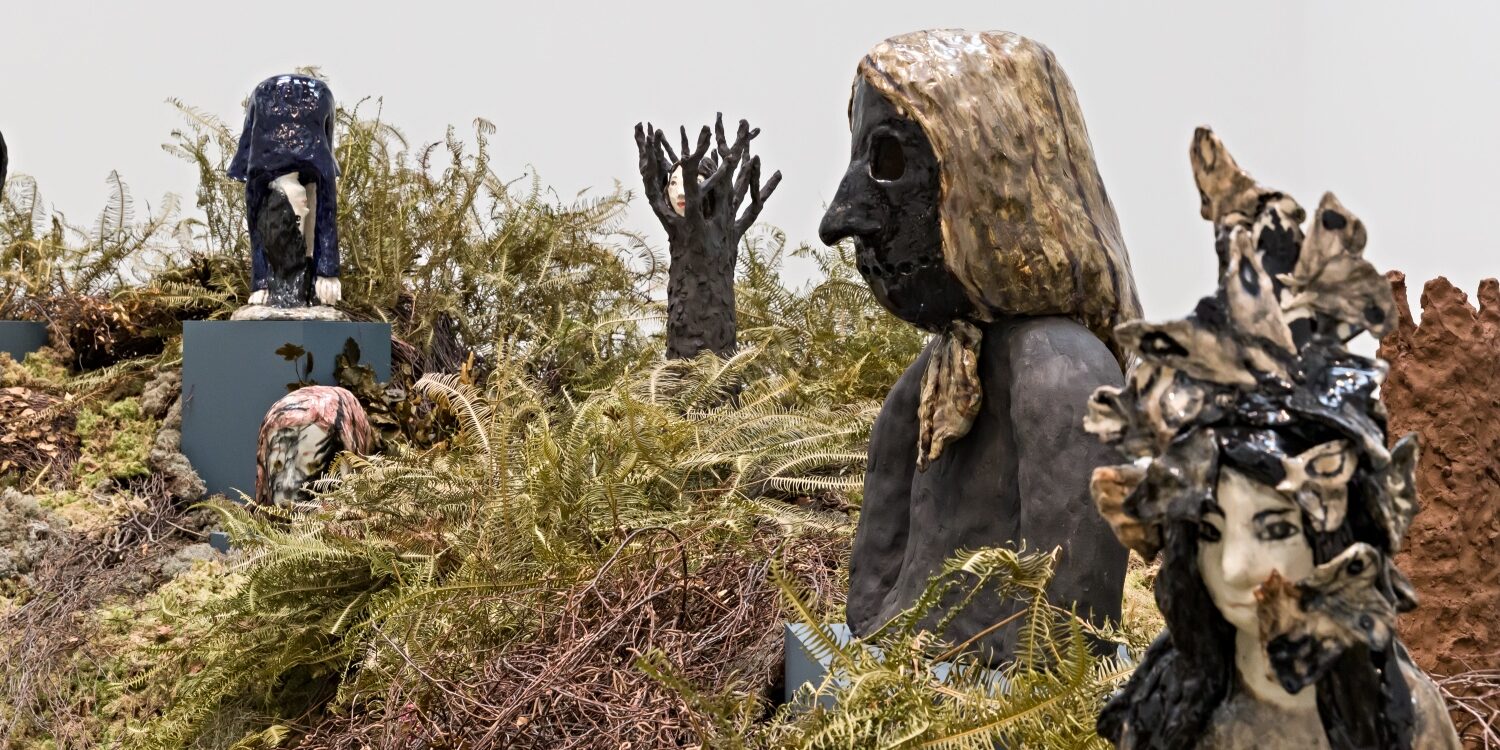
In addition to being one of the most unique art exhibitions at London’s Southbank Centre, ‘Strange Clay’ is also the first exhibition of its kind to take place in the UK. It is the country’s premier large-scale group exhibition showcasing exclusively contemporary artists working in ceramics.
The exhibition aims to explore clay’s vast artistic potential. Lamentably, the art of ceramics is commonly relegated to the seemingly lower-brow arts category of ‘craft’: something made manually. However, ‘Strange Clay’ endeavours to call the apparent division between high art and craft into question with its display of unusual clay creations.
"Here, you will find no ordinary vases, pots, or plates. The humble mug and jug transform into something otherworldly."
Strange Visuals
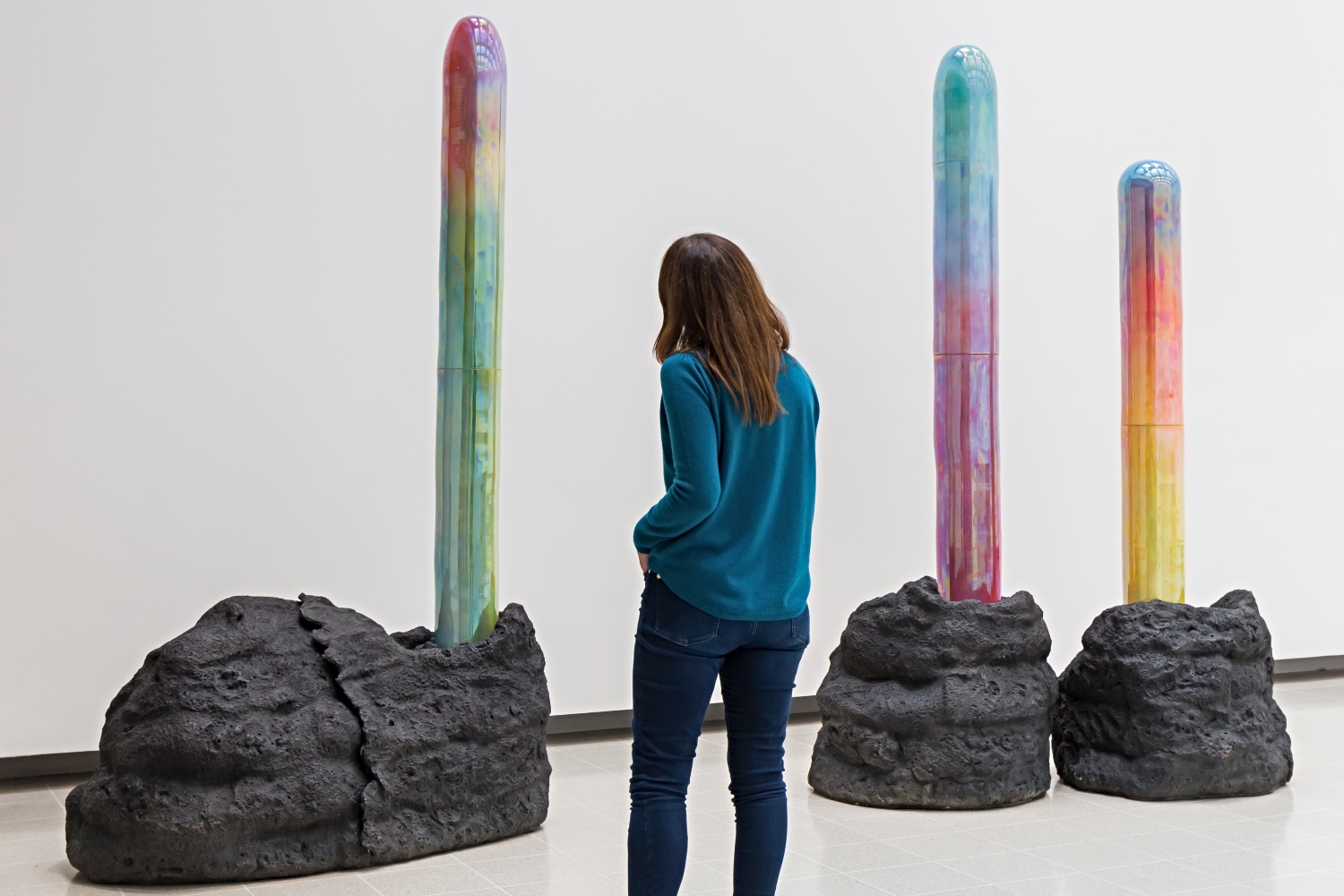
The works featured in ‘Strange Clay’ consist of a broad range of styles and production techniques. The overall effect is a setting akin to a phantasmagoria, as the boundaries of reality are blurred.
Several artists draw inspiration from this world’s landscapes in order to create otherworldly ceramics. Salvatore Arancio, for example, creates works based on the volcanic landscapes of his native Sicily. In ‘It Was Only a Matter of Time Before We Found the Pyramid and Forced It Open’, he combines rough unglazed clay – reminiscent of hardened lava – with neon-glazed clay. The mixture of textures and colours creates a sort of hallucinogenic effect, where the natural world meets the manufactured.
Ken Price is another artist whose final products may leave viewers wondering what is real and what is imagined. His ceramic works ‘Marti,’ ‘Ra-Da-Da-Da’ and ‘Oki’ reference the landscapes of California, Massachusetts, and New Mexico. However, the sculptures’ resemblance to anything of this world may be difficult for the common eye to discern.
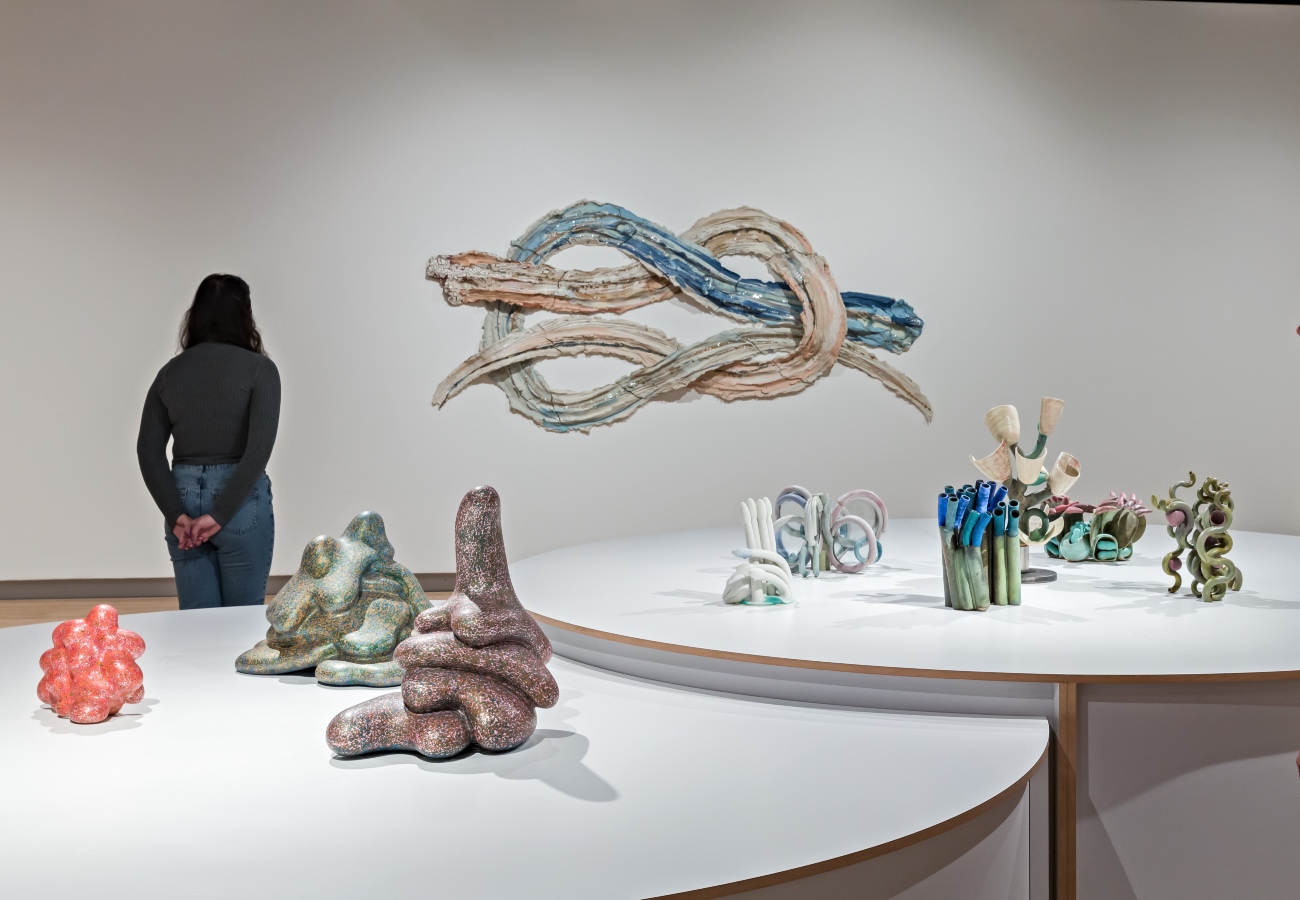
The pieces, which may in layman’s terms be described as colourful blobs, were created by applying up to 70 layers of acrylic paint to a ceramic base. Following this, Price used one of two methods: sanding down the surfaces or applying chemicals to disrupt the paint’s pigment. These techniques led to the speckled colouring and shimmering quality visible on the final products.
Arancio and Price are examples of how clay can be used as a medium for expressing unexpected interpretations. Taking the familiar – our earthly landscapes – as their starting point, they transform their subject matter into something completely alien. In giving new forms to commonplace shapes, these creations offer encouragement to view things from many different angles.
"By offering unusual views of familiar things, the strange ceramics urge visitors to question the existence of any one singular ‘reality’. Instead, ‘Strange Clay’ champions a multiplicity of viewpoints, including (and perhaps especially promoting) the eccentric."
Personal and Political
While some works in ‘Strange Clay’ prioritize striking visuals and novel artistic techniques, others were created as a mode of social commentary. The display certainly wins a spot amongst the city’s most unique art exhibitions for the strangeness of its aesthetic. Yet it is also unique in the sheer diversity of themes covered within it and the forms in which these themes are explored.

Lindsey Mendick’s commentary on conflict in the domestic space takes the form of an immersive display in ‘Till Death Do Us Part’. For this large-scale piece, the English artist recreates a model home. Visitors enter into the kitchen, bathroom, and living room to discover that every space has been transformed into a battlefield.
A ceramic octopus occupies a toilet, its tentacles spilling over the surface and bursting into the viewer’s eyeline. Clay mice row away from the toilet monster in rowboats. In the living room, ceramic cockroaches rappel down from a ceramic lamp, while more mice conduct a violent war in the back of the couch. The clay vermin taking over the house and waging small-scale war represent the way that micro conflict pervades the home space. As Mendick says, ‘Our houses are personal worlds – microcosms of hell, bliss or loneliness.’
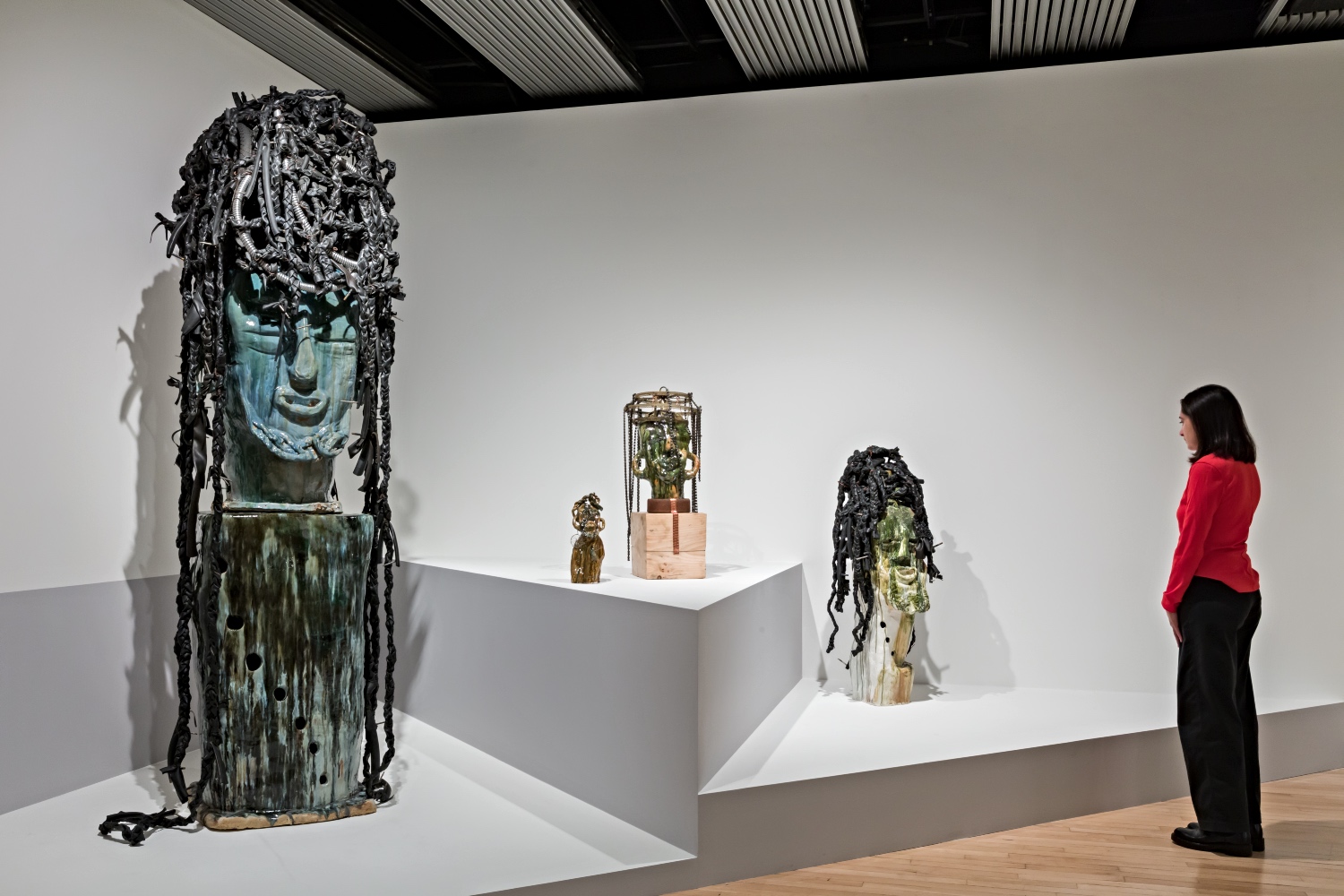
Other artists chose to focus on conflict taking place beyond the domestic. Combining the personal with the political, Ugandan artist Leilah Babirye incorporates items found on the streets of New York into her ceramic work. The use of ‘rubbish’ found on the streets is a direct reference to the Ugandan word ‘abasiyazi’. On a literal level, the word refers to the inedible, discarded part of the sugar cane. Yet, it is also used in Uganda as a pejorative term for queer people.
Babirye, who fled Uganda after being persecuted for her active support of the LGBTQ+ community, subverts the negative connotations of the term by transforming discarded items off the street into art. For example, in ‘Nakawaddwa from the Kuchu Ngabi (Antelope) Clan,’ rusted bike chains become a crown atop a smooth-glazed ceramic head. In ‘Nagirinya from the Kuchu Ngo (Leopard) Clan’, rubber from disused bike tyres become braids. Babiyre thus uses ceramics to elevate the ‘abasiyazi,’ reclaiming the term and championing the strength of the queer community.
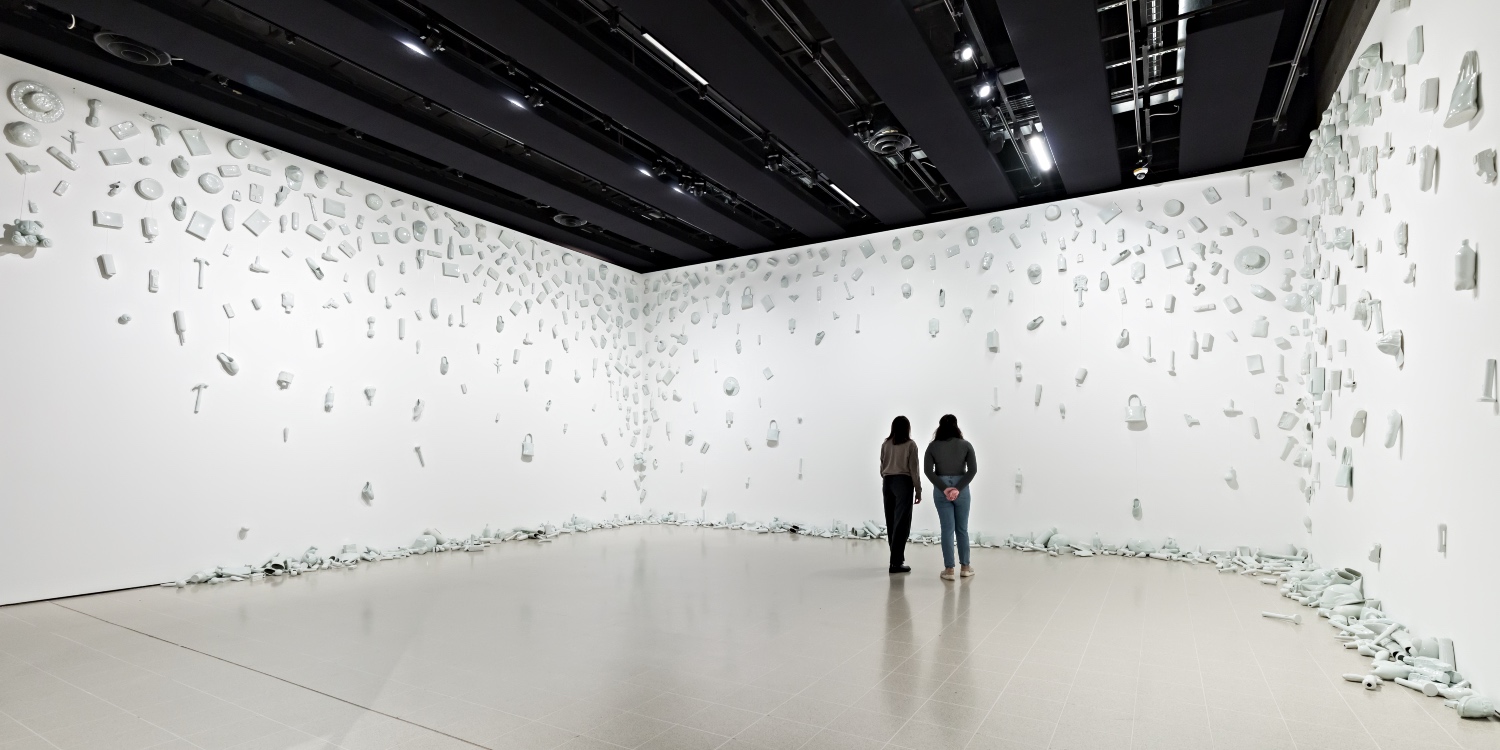
London is full of unique art exhibitions. Yet ‘Strange Clay’ stands out as a particularly fine example of human variety and creativity. It is innovative in its untypicality, presenting topsy turvy worlds that remind viewers of the importance of imagination as well as variegation. By offering unusual views of familiar things, the strange ceramics urge visitors to question the existence of any one singular ‘reality’. Instead, ‘Strange Clay’ champions a multiplicity of viewpoints, including (and perhaps especially promoting) the eccentric.





